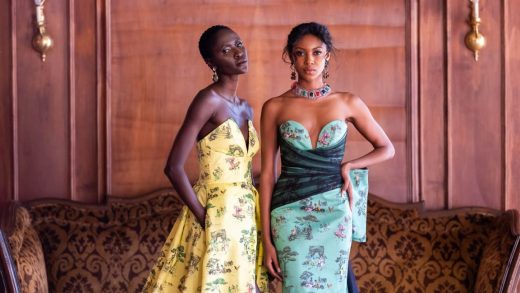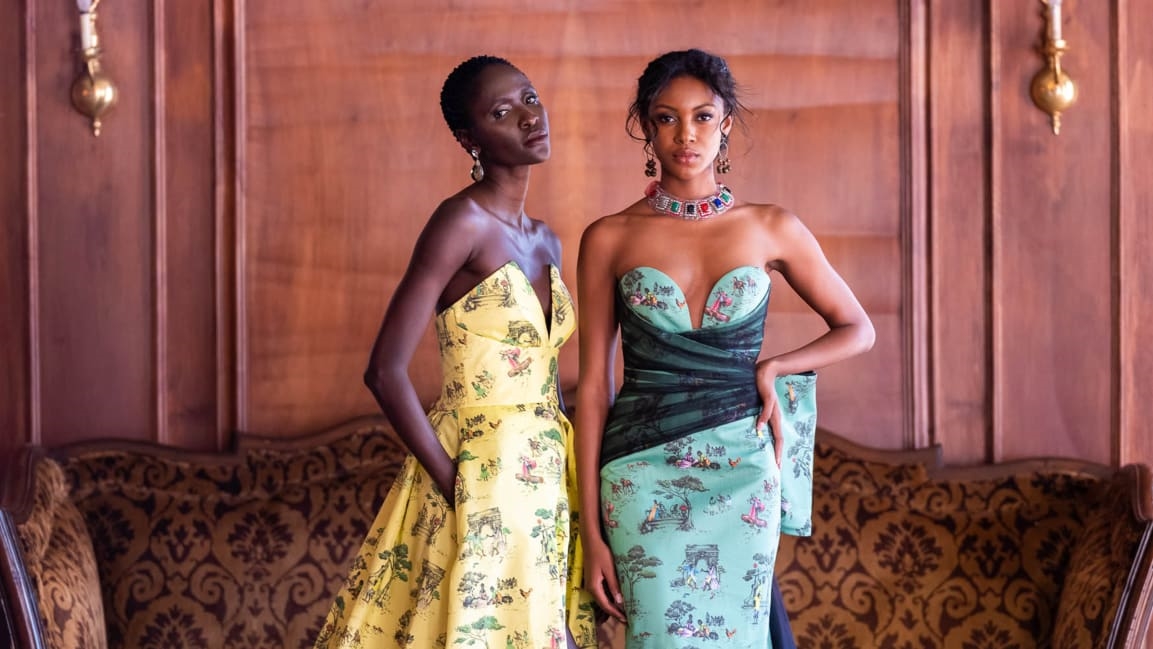See the Black-centered design motif Nordstrom, Sonos, and The Inside can’t get enough of
For centuries, Toile de Jouy has conjured a sense of luxury and refinement. Characterized by repeated motifs and illustrative pastoral scenes, the pattern often mirrored major events of the time. To this day, you can find it everywhere from Dior bags to a wrap dress Meghan Markle wore at a wedding, to the wallpapers of the wealthiest celebrity homes. Except in historical renderings, one part of the population was conspicuously absent.
Toile de Jouy can be seen as a crown jewel of the decorative arts movement — a style of decoration that dates back to ancient cultures and is most notably associated with objects that pay equal importance to form and function. However, its Eurocentric influences have made it an exclusive pattern that omitted anyone who wasn’t white and upper class. Then Sheila Bridges came along.
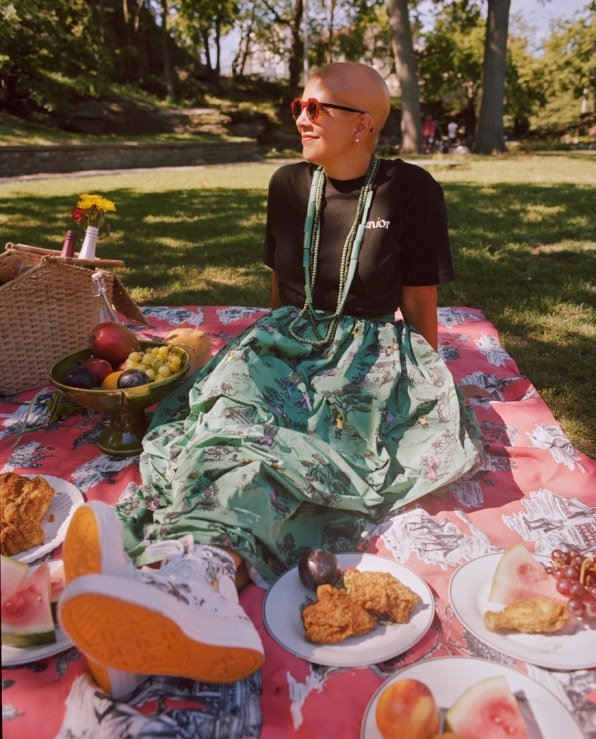
In 2006, the American interior designer created Harlem Toile, a Black-centered toile pattern that offers a more inclusive interpretation of one of the world’s most iconic patterns. Sixteen years later, Harlem Toile can be found at The Shade Store, The Inside, Nordstrom, and S.Harris. It’s even in the permanent collection of The Cooper Hewitt, Smithsonian Design Museum. Whether it appears on drapes, furniture, men’s clothing, or wallpapers, the pattern celebrates the complex history and rich culture of African Americans, and puts it on display.
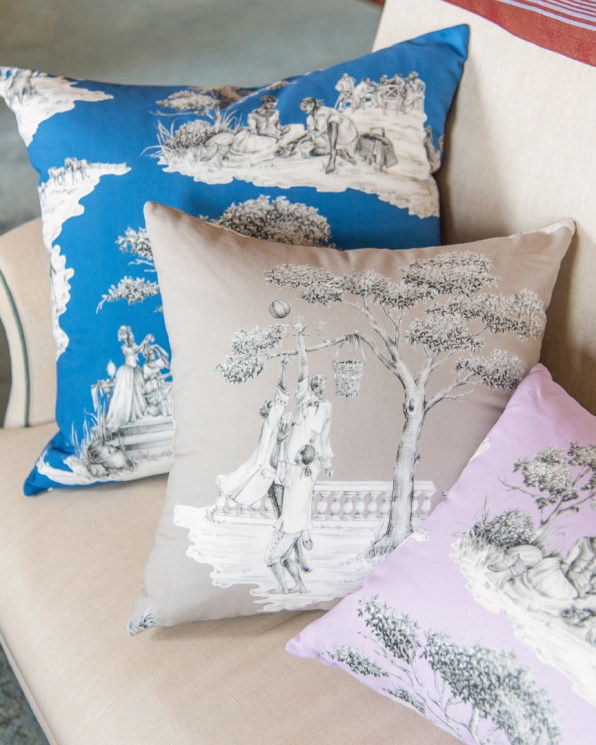
A Celebration of Black Culture
Over the course of her illustrious career, Bridges has authored two books, hosted a TV show, and designed offices and residences for prominent figures, including the 8,300-square-foot Harlem offices of former President Bill Clinton.
She first discovered toile during a trip in France. As a designer, she says the pattern is very commonly used in the world of decorating. Except when Bridges set out to decorate her own home in Harlem, she embarked on a doomed quest for a toile that spoke to her. “I’ve always loved toiles,” she says. “Like many things a lot of designers do, when we don’t find things, we simply create them,” she says.
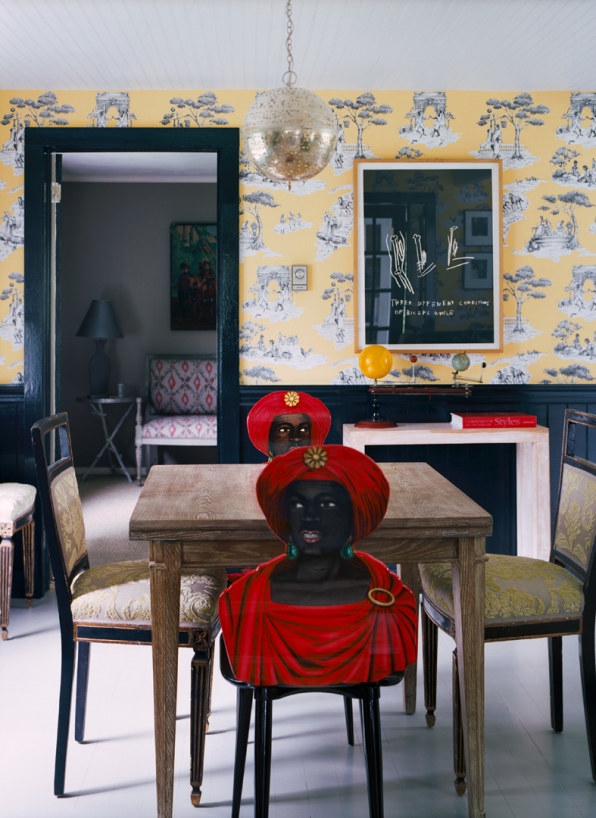
And so, in 2006, Harlem Toile was born. Like the traditional version that inspired it, Harlem Toile depicts a series of pastoral scenes. Unlike the traditional version, Bridges centers her toile around African-American people. A total of six scenes are repeated throughout the pattern, which leans historical but with a modern twist. In one vignette, three girls are playing double-dutch – a jump rope game with roots in Africa. In another, a jovial couple, dressed in 18th century-style garments, is dancing to the sound of a ’70s boom box by a stone arch inspired by the Washington Square Park Arch – a defiant scene considering George Washington was a slave owner.
“I wanted to do a toile that was more representative of my history,” says Bridges, noting that she wanted to acknowledge many stereotypes put forth about African Americans. “It is about stereotypes but at the same time I’m celebrating this part of our culture, which is very regularly appropriated.”
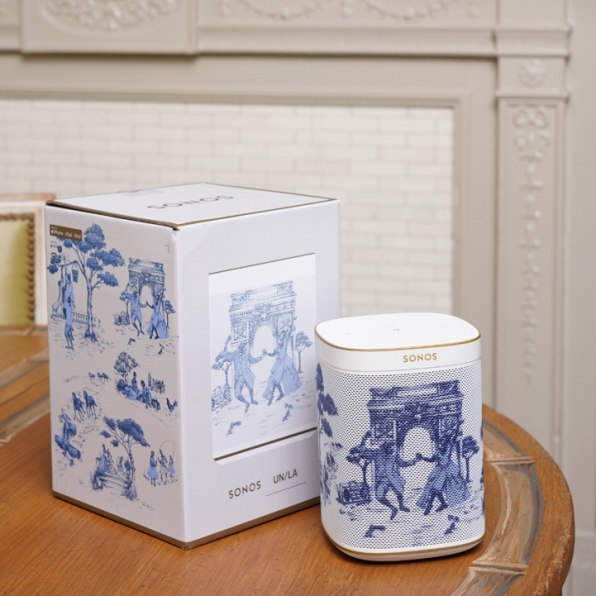
The celebratory aspect is visible not only in the make-up of the scenes but also in the colors Bridges has chosen. Unlike traditional toile patterns that usually feature one color against an off-white background, Harlem Toile is infused with color. “A lot of people associate bright colors with my work,” says Bridges. “For me, it’s about all different parts of Black culture and celebrating these parts of Black culture.”
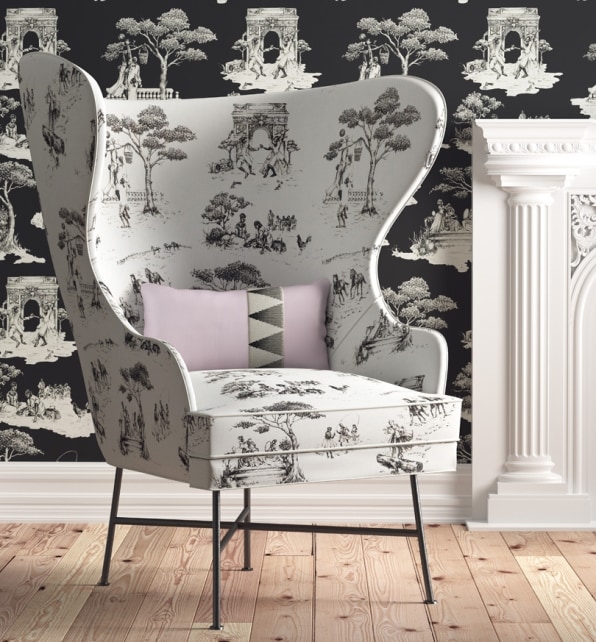
The History of Toile
People have always told stories through toiles. First developed in Ireland in the 1750s, toiles quickly made their way to France, where they became known as Toile de Jouy (which translates as cloth from the French town of Jouy). The pattern soon became synonymous with French flair. Patterns were influenced by trends and events of the time, like the first hot air balloon flight, scenes of the French revolution, or other idyllic motifs and rural landscapes filled with flower motifs and couples picnicking by a lake.
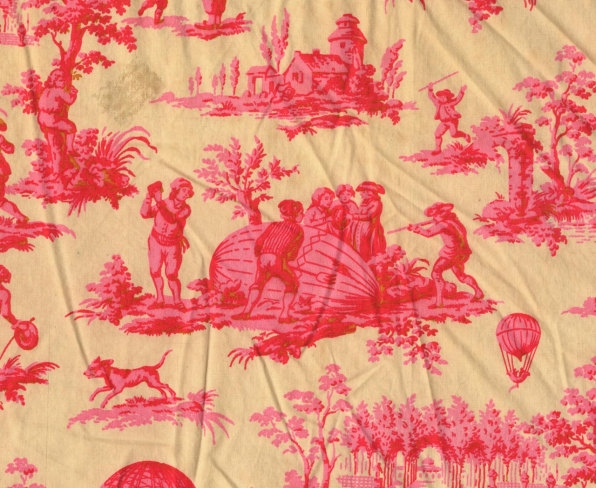
In the late 18th-century, Toile de Jouy was a fashionable choice for wall coverings, upholstery and clothing among royalty, which may be why some find traditional toile a little stuffy and outdated. “At that time,
[patterns]
were representative of that class of people,” says Bridges.
Over the years, however, the pattern’s influence has expanded outside of royal confines and found its way across many other cultures including in the United States, where it was popular during the Colonial Era. The pattern has since pervaded contemporary fashion (see Christian Dior’s book tote from 2019, followed by H&M’s rendition of the pattern). As Bridges notes, there is now a toile for every kind of theme, from dogs to San Francisco to Brooklyn. This evolution from a pastoral pattern to more contemporary depictions may explain the pattern’s endurance. “I think that toile pattern in a generic sense is pretty classic,” she says. “It’s just the subject matter has changed.”
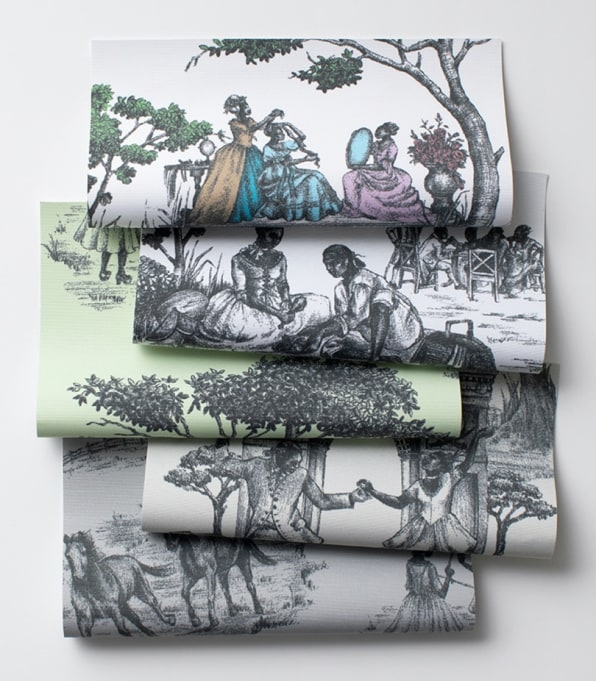
Harlem Toile Today
Bridges may have created Harlem Toile for herself, but she has since collaborated with a host of brands, taking the pattern “a step further,” she says. Over the course of the past 16 years, her toile has graced the likes of a furniture collection for The Inside, roller shades for The Shade Store, a limited-edition Chuck Taylor Converse sneakers (they will soon be displayed at the RISD Museum), and Sonos speakers. Most recently, she also collaborated with bridal designer Mark Ingram Atelier on a striking collection of gowns featuring the Harlem Toile pattern.

Bridges says she’s very particular about the choices she makes in a partnership. “I try to be as authentic as I can be about who I collaborate with,” she says. In some cases, she chooses a brand because she uses their products: She has Sonos speakers at home, and Chuck Taylors are some of her favorite sneakers. In other cases, it’s about partnering with companies with a desire to bring Harlem Toile to a younger generation that may not have found ornate pastoral patterns aesthetically pleasing or relevant to the 21st century. “Not everybody can afford a wallpaper that’s $300 a roll, but people can afford a set of plates for $48,” she says in reference to a tableware collection she designed for Glitterville Studios (it was featured in Oprah’s Favorite Things last year).

Bridges says the actual vignettes haven’t changed much since she designed them in 2006. “I try to make each of them a little different,” she notes, but the disparities usually have to do with scale and color, like with custom colorways she created for The Inside.
Sixteen years later, Harlem Toile remains the same pattern that Bridges created for her own home. In many ways, it can also be seen as a tribute to the neighborhood after which it was named. Although she grew up in Philadelphia (she says the double-dutch vignette was inspired by her own childhood playing the game), Bridges has lived in Harlem for 30 years. She says Harlem has long been recognized as “a central hub of Black culture in America” – and Harlem Toile is a symbol of that.
(64)

